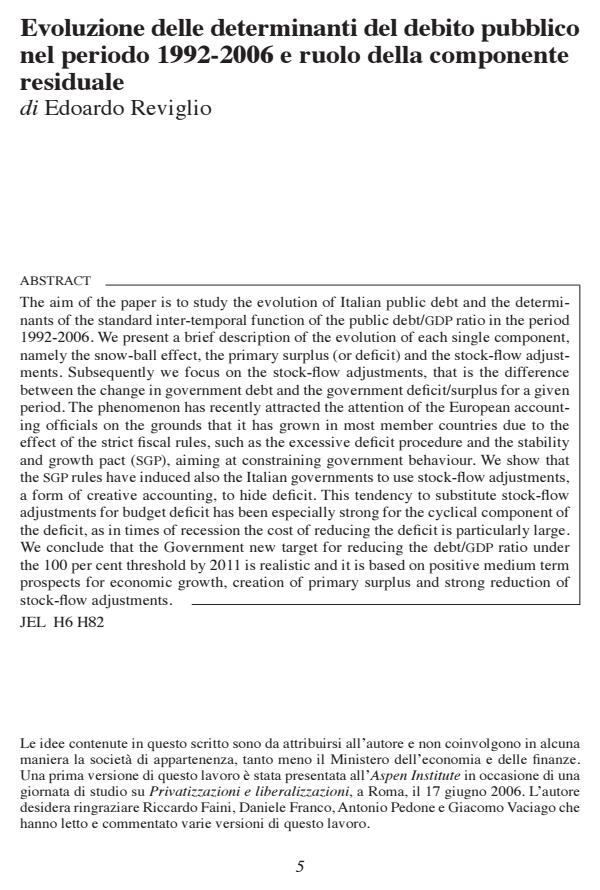Evoluzione delle determinanti del debito pubblico nel periodo 1992-2006 e ruolo della componente residuale
Titolo Rivista ECONOMIA PUBBLICA
Autori/Curatori Edoardo Reviglio
Anno di pubblicazione 2008 Fascicolo 2007/3-4
Lingua Italiano Numero pagine 17 P. 5-21 Dimensione file 391 KB
DOI
Il DOI è il codice a barre della proprietà intellettuale: per saperne di più
clicca qui
Qui sotto puoi vedere in anteprima la prima pagina di questo articolo.
Se questo articolo ti interessa, lo puoi acquistare (e scaricare in formato pdf) seguendo le facili indicazioni per acquistare il download credit. Acquista Download Credits per scaricare questo Articolo in formato PDF

FrancoAngeli è membro della Publishers International Linking Association, Inc (PILA)associazione indipendente e non profit per facilitare (attraverso i servizi tecnologici implementati da CrossRef.org) l’accesso degli studiosi ai contenuti digitali nelle pubblicazioni professionali e scientifiche
The aim of the paper is to study the evolution of Italian public debt and the determinants of the standard inter-temporal function of the public debt/gdp ratio in the period 1992-2006. We present a brief description of the evolution of each single component, namely the snow-ball effect, the primary surplus (or deficit) and the stock-flow adjustments. Subsequently we focus on the stock-flow adjustments, that is the difference between the change in government debt and the government deficit/surplus for a given period. The phenomenon has recently attracted the attention of the European accounting officials on the grounds that it has grown in most member countries due to the effect of the strict fiscal rules, such as the excessive deficit procedure and the stability and growth pact (sgp), aiming at constraining government behaviour. We show that the sgp rules have induced also the Italian governments to use stock-flow adjustments, a form of creative accounting, to hide deficit. This tendency to substitute stock-flow adjustments for budget deficit has been especially strong for the cyclical component of the deficit, as in times of recession the cost of reducing the deficit is particularly large. We conclude that the Government new target for reducing the debt/gdp ratio under the 100 per cent threshold by 2011 is realistic and it is based on positive medium term prospects for economic growth, creation of primary surplus and strong reduction of stock-flow adjustments.
Edoardo Reviglio, Evoluzione delle determinanti del debito pubblico nel periodo 1992-2006 e ruolo della componente residuale in "ECONOMIA PUBBLICA " 3-4/2007, pp 5-21, DOI: